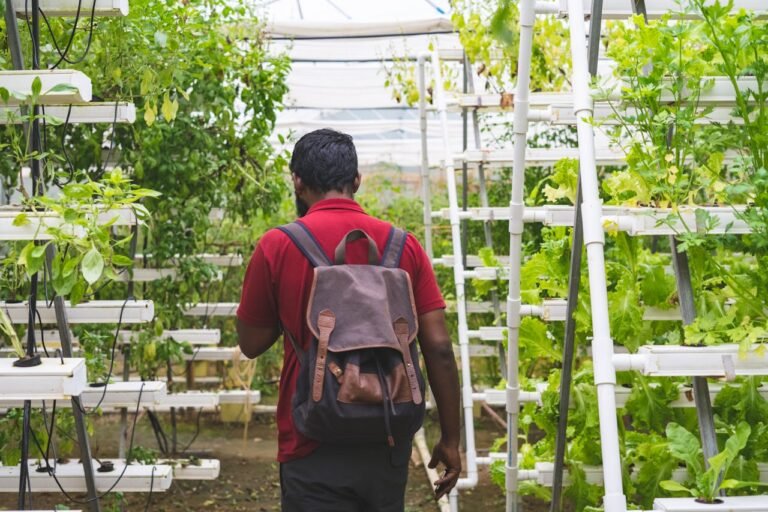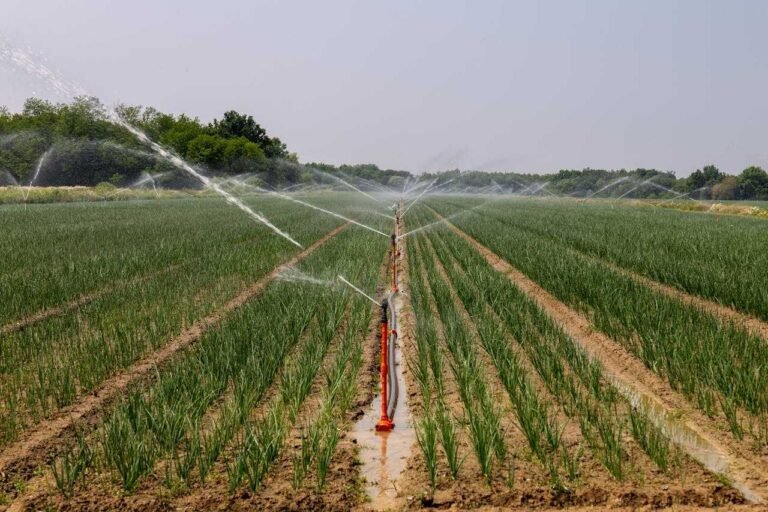How to Start Vertical Farming At Home
Imagine harvesting crisp lettuce and fragrant basil from your living room—no backyard required. Vertical farming at home involves stacking layers of plants indoors or on balconies and utilising lights, water systems, and technology to grow produce year-round. It’s a shift from sprawling vegetable patches to tower-style gardens, designed for space-limited urban homes, climate resilience, and healthy food on demand.
This method isn’t futuristic—it’s practical and increasingly accessible thanks to breakthroughs in hydroponics, aeroponics, LED lighting, and affordable automation. Whether you’re a beginner or curious gardener, this guide combines scientific research, real-world stories, and expert voices to help you cultivate your vertical oasis.
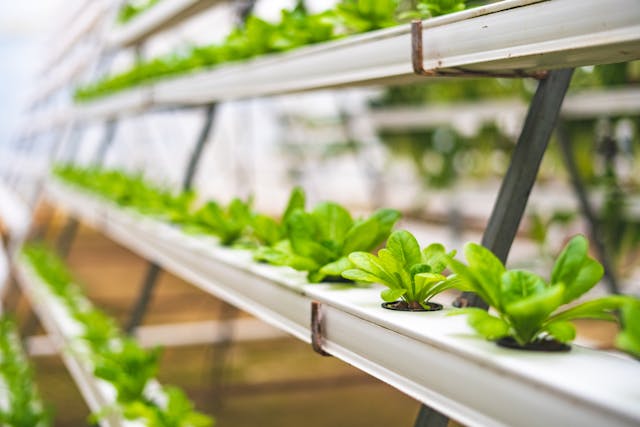
In This Article
- Why Home Vertical Farming Works
- Building Your Setup: Steps and Real-World Examples
- The Science Behind Soil-Free Growth
- Challenges You’ll Face and How to Overcome Them
- Case Study & Interactive Data: Comparing Hydroponic vs. Aeroponic Home Yields
- Expert Voices: Why Vertical Farming Matters
- Conclusion
Why Home Vertical Farming Works
Traditional agriculture commands vast fields, seasonal constraints, and unpredictable weather. Vertical farming compresses all that into compact, controlled setups that can sit in a spare room or on a balcony.
1. Greater yields and space use
Controlled-environment agriculture allows for continuous, year-round growing and vertical stacking. According to the USDA, certain crops can yield 10–20 times more per acre indoors than traditional field farming. A ResearchGate review notes that hydroponics in vertical systems can increase lettuce yield per area by approximately 11 times. These figures aren’t just theoretical: home setups using stacked grow towers regularly produce dense harvests in tight quarters.
2. Efficient water and nutrient cycles
Vertical farming optimises water and nutrient use through closed-loop systems and precise environmental control. By stacking crops indoors and recycling water, vertical farms can reduce water consumption by up to 95% compared to traditional field methods, according to a study published in Agronomy. Advanced monitoring ensures that nutrients are delivered exactly when and where needed, minimising waste and runoff. Unlike conventional farming, where much of the water and fertiliser is lost, vertical systems capture and reuse resources efficiently, making them a sustainable solution for food production in water-scarce regions.
3. Year‑round resilience and freshness
By growing indoors under LED lighting, microclimates and seasons become irrelevant. That means fresh, pesticide-free produce even in harsh winters or heat waves. A review on “vertical farming goes dynamic” highlights how adjusting lighting and environment precisely can maintain growth and cut costs.
Learn More: Sustainable Agriculture and Farming: A Comprehensive Guide
4. Healthier urban lifestyles and education
Vertical farming blends horticulture, tech, and sustainability—a mini science lab at home. It advances STEM learning, reduces food miles, and encourages fresh food consumption. A 2024 Green.org case study showed that students using vertical farms reported deeper insights into science and sustainability.
Building Your Setup: Steps and Real-World Examples
Many fear that vertical farming is expensive or complex. Yet small-scale successes show it’s doable, educational, and rewarding—even without big budgets.
From Taekwondo Dojo to Basil Farm
In Glens Falls, New York, a former dojo hosted a simple, 480-square-foot PVC vertical farm. Under 8-foot-tall racks and LED lights, it grew basil and salad greens for local restaurants in a community-purposed space.
Economic development director Jeff Flagg describes it as “a box in a box”—a compact, replicable model for urban settings. Farmer-electrician Josh Fabian recalls walking fresh greens to restaurants nearby, making vertical farming a community staple.
Initially funded with under $100,000 via a public-private grant, the project provided year-round produce while tracking its energy usage. It wasn’t about profit—it was about revitalising space and nourishing local businesses.
Shanghai Families Growing Their Own
A pilot study of home-based vertical systems in Shanghai showed that families could increase their vegetable self-sufficiency by 20.7% and fruits by 2.5%. The setup’s economic model projected a 30% return on investment. That’s savings in groceries and a hedge against supply-chain disruptions.
Tech‑Enabled Indoor Farming
Recent academic research explores robotic assistance in containerised vertical farms. A system using cobots to transplant and harvest greens from shipping‑container farms was successful based on a single demonstration setup. Similarly, AI and IoT enhancements allow vertical farms to manage micronutrient levels, lighting cycles, and pest detection with precision.
The Science Behind Soil-Free Growth
At-home vertical farms often rely on two core systems: hydroponics and aeroponics. These have differing setups and scientific bases.
Hydroponics basics
Plants grow in nutrient-laced water rather than soil. Roots are submerged or suspended in troughs or trays. Water, air, and nutrients circulate, offering precise control. Studies show hydroponic systems can cut water usage by up to 90% and remove virtually all runoff pollution. Nutrient dosing is finely adjustable; yields grow faster than field equivalents by 20–30%.
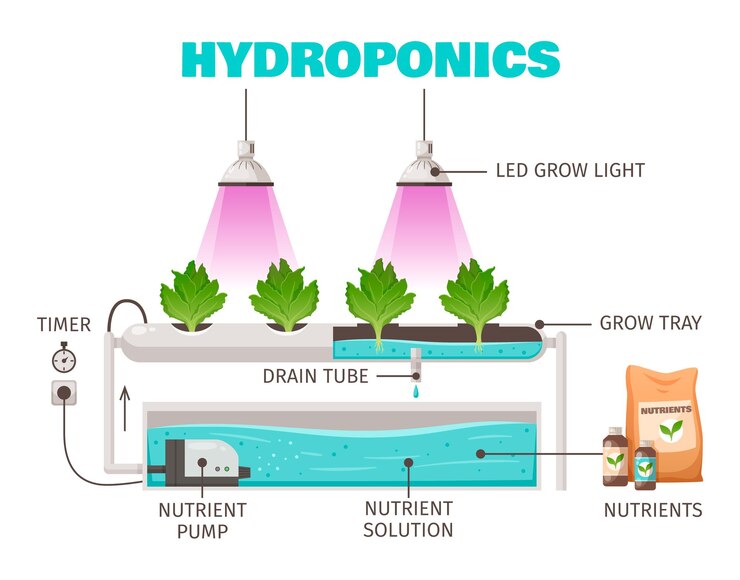
Why aeroponics?
Here, roots hang in the air and are misted periodically. NASA research shows aeroponic-grown plants gain 80% more dry biomass than hydroponics, while using 65% less water and a quarter of the nutrients. For home farmers seeking maximum efficiency, aeroponics delivers, but with added setup complexity.
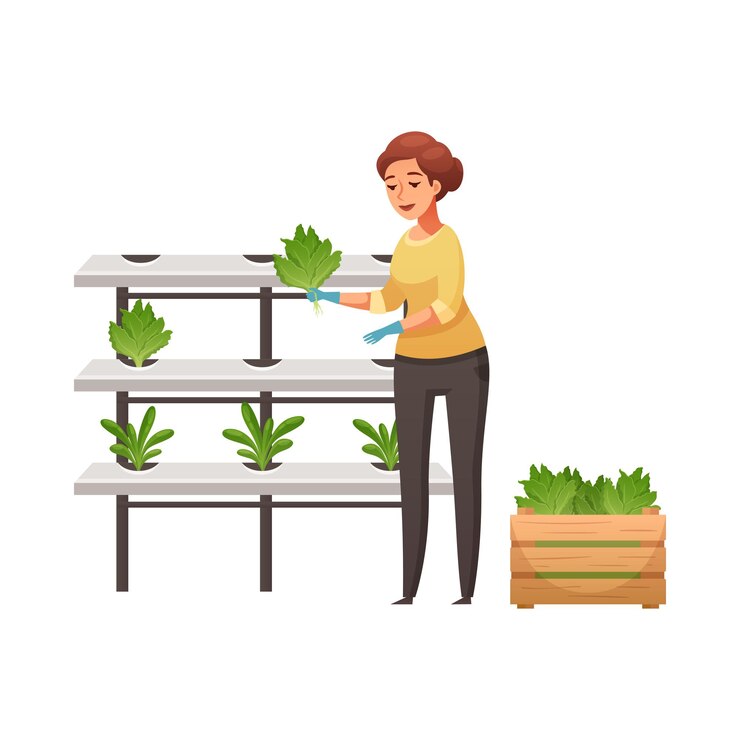
Lighting tech: LEDs and dynamic scheduling
Without sunlight, LEDs are vital. White LED setups mimic natural light, and trials with lettuce showed ideal growth and energy efficiency. Advanced systems adjust daily light intensity to match off-peak energy prices, balancing plant needs and electric billing.
Automation and sensors
You don’t have to be an engineer—starter kits handle timers, pumps, and lights. But enthusiasts may incorporate sensors tracking pH, humidity, or nutrient levels. Higher-tech systems even use small robotics to transplant seedlings or harvest microgreens based on visual detection.
Challenges You’ll Face and How to Overcome Them
Vertical farming is empowering, but not without obstacles. Recognising these helps future-proof your setup.
1. Energy consumption and lighting costs
Artificial lighting and climate control require energy. The USDA warns LED and HVAC systems aren’t free—electricity is the top cost. To offset this:
- Use sunlight-adjacent spaces or balconies.
- Choose energy‑efficient LEDs.
- Set lights on off‑peak rates with timers.
- Integrate small solar panels for extra energy.
2. System cleanliness and maintenance
Grow systems need daily attention. Reddit users note that home kits are tough to clean:
“Down sides are that it is hard to light, hard to clean…”
To manage this, grab easy‑access trays, plan weekly clean cycles, and avoid soil—reducing pest and pathogen risks.
3. Up‑front costs
While scalable, initial expenses include LED lights, pumps, and racks. However, Shanghai’s model showed a 30% return ResearchGate. New DIY options—from refurbished pallets to secondhand lights—lower entry costs significantly.
4. Crop limitations
Vertical farms excel at leafy greens, herbs, and microgreens. Large crops (corn, root vegetables) aren’t feasible. Focus on high-turnover plants: basil, lettuce, arugula, spinach—they grow fast and fit compact units.
Case Study & Interactive Data: Comparing Hydroponic vs. Aeroponic Home Yields
| Parameter | Hydroponics | Aeroponics |
|---|---|---|
| Water efficiency | ↓90% water usage | ↓65% more efficient |
| Nutrient usage | Standard dosage | ↓75% nutrients |
| Biomass yield | +20–30% vs soil | +80% dry weight |
| Setup complexity | Moderate | High |
| Cost | Low–moderate | Moderate–high |
This comparison helps you select based on budget, experience, and commitment.
Expert Voices: Why Vertical Farming Matters
“Controlled environments are the future,” says Dr. Hribhu Chowdhury, AI & AgriTech researcher, highlighting how machine learning and sensors optimise yields sustainably.
USDA researcher Jamie Anderson emphasises vertical farming’s productivity gains but warns, “You give up access to the Sun… artificial light sources, which can become costly.”
Glens Falls economic director Jeff Flagg notes the social impact: “Every upstate New York town… has spaces like this… can you make this something productive?”
These voices reflect the balance of high potential and real‑world constraints.
Conclusion
Vertical farming at home offers abundant rewards: fresher produce, sustainable living, STEM fascination, and community empowerment. But it also demands thoughtful planning around energy, maintenance, and realistic harvest goals.
Actionable Steps for Beginners
- Start small. Choose a single rack or countertop kit for herbs. Learn pH, nutrient cycles, and lighting routines before scaling.
- Plan your crops. Stick to quick‑cycle greens—lettuce, basil, microgreens—for faster returns and simplicity.
- Invest wisely. Choose LED lights rated >130 µmol/J and energy-efficient pumps. Monitor your electricity usage.
- Schedule routine care. Weekly cleanings prevent mould; pH and nutrient checks ensure healthy growth.
- Integrate renewable power. Even small solar panels can reduce energy costs over time.
- Track ROI. Save receipts, track yields, and calculate grocery savings vs. expenses. Shanghai families saw 30% returns.
- Engage the community. Share produce with friends or neighbours. It keeps you motivated and spreads awareness.
- Learn and iterate. Use online forums and studies to refine techniques: monitor light cycles, nutrients, and airflow.
Learn More: What is Vertical Hydroponic Farming?
Why This Matters Now
- As urban areas expand and climate change disrupts global supply chains, vertical systems offer locally grown resilience.
- They reduce water use by up to 90%, cut food miles, and remove pesticide reliance—all while fitting into apartments and classrooms.
- They spark educational curiosity and practical solutions, from DIYers in Shanghai to community-led farms in New York.
By embracing this approach, you’re not just growing food—you’re cultivating a future where fresh, sustainable produce is within arm’s reach, no matter where you live.
Your vertical farm can start as a personal experiment and grow into a community anchor. Begin with a small kit, nurture your gre

